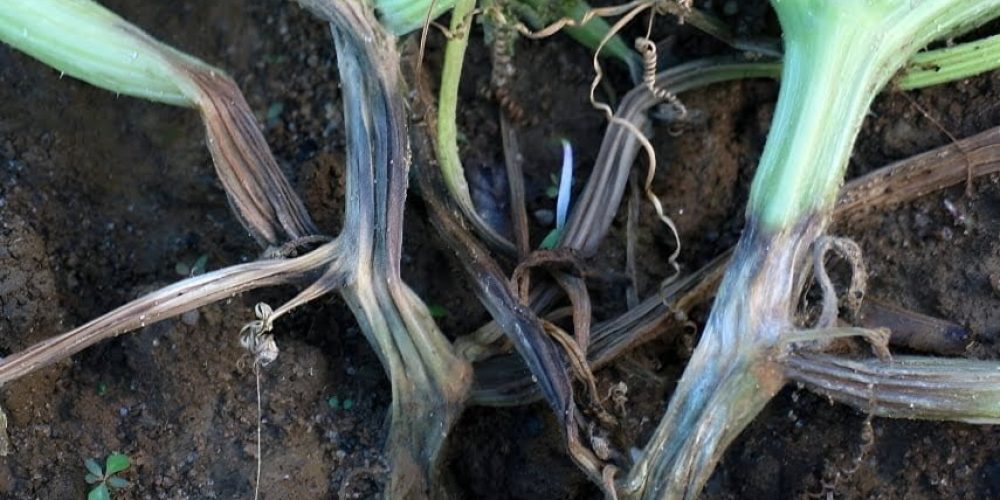Table of contents of the article
ToggleLate blight is a serious disease that affects zucchini in its advanced stages, causing leaf fall and fruit damage. In this article on your website, World of Plants, we will review methods for dealing with this disease.
Symptoms of late blight in zucchini
Scientific name :- Phytophthora infestans
Causative factor : Phytophthora capsici
It is noted that the affected leaves appear pale and shriveled, appearing yellow in color and losing their luster.
The leaf is covered with spots and wilted areas surrounded by a light yellow halo that increases in size as we approach the edges and sides of the leaf.
It begins with the death of the back of the growing limb.
Symptoms can also start at the crown of the plant.
Fruit rot usually begins on the underside of the fruit in contact with the ground. This makes it difficult to control with fungicides.
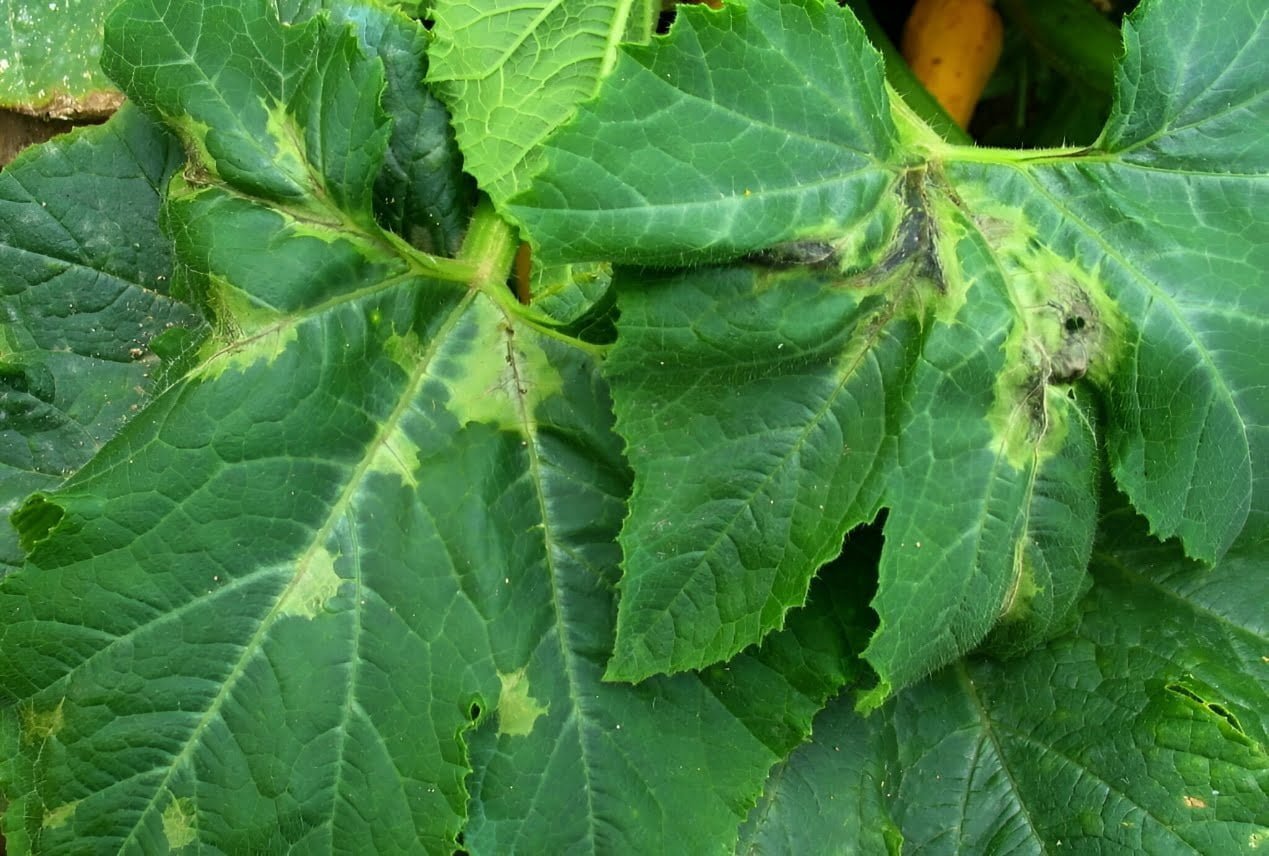
- A picture showing you the beginning of late blight in zucchini (paleness on the leaf)
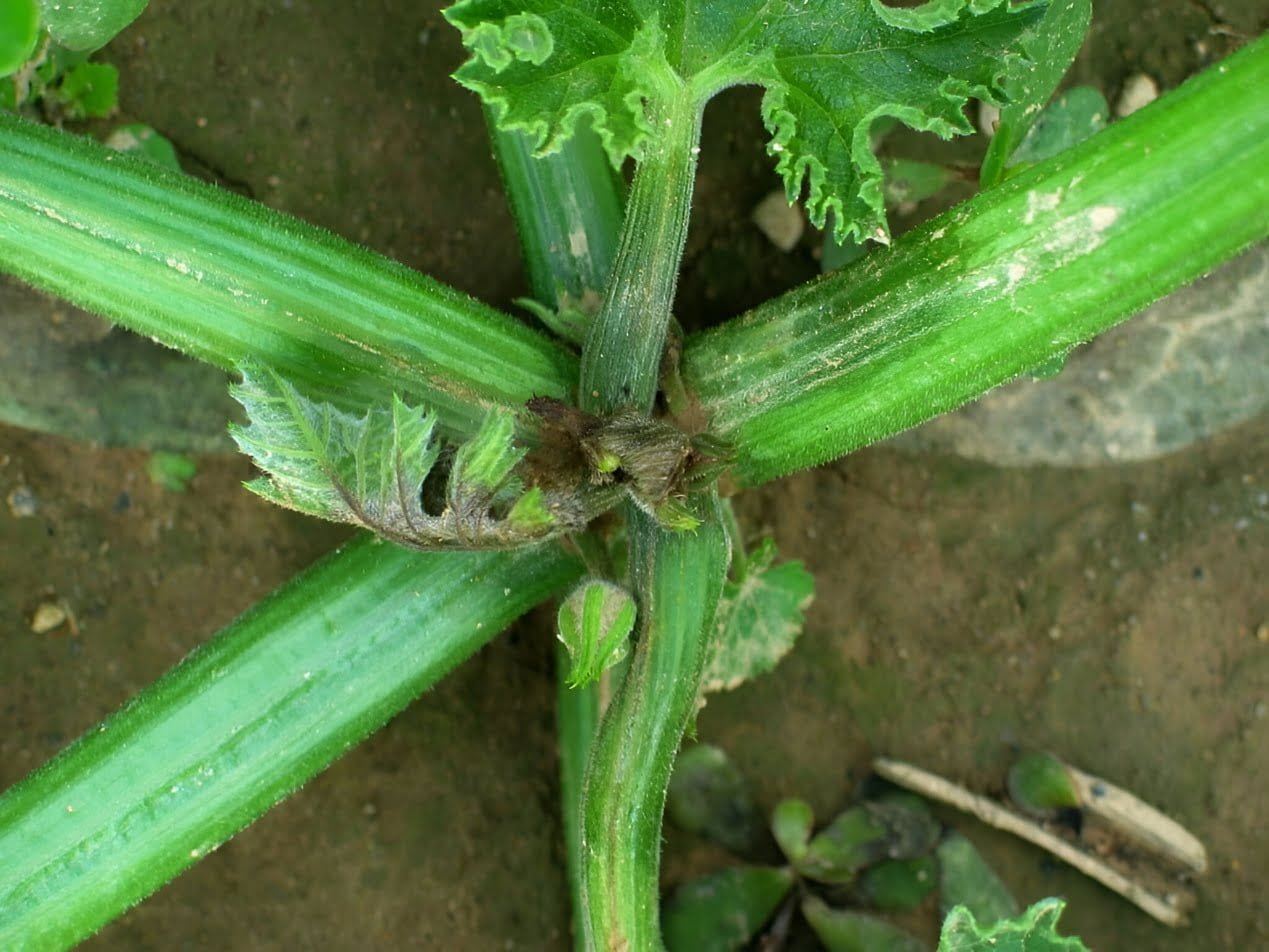
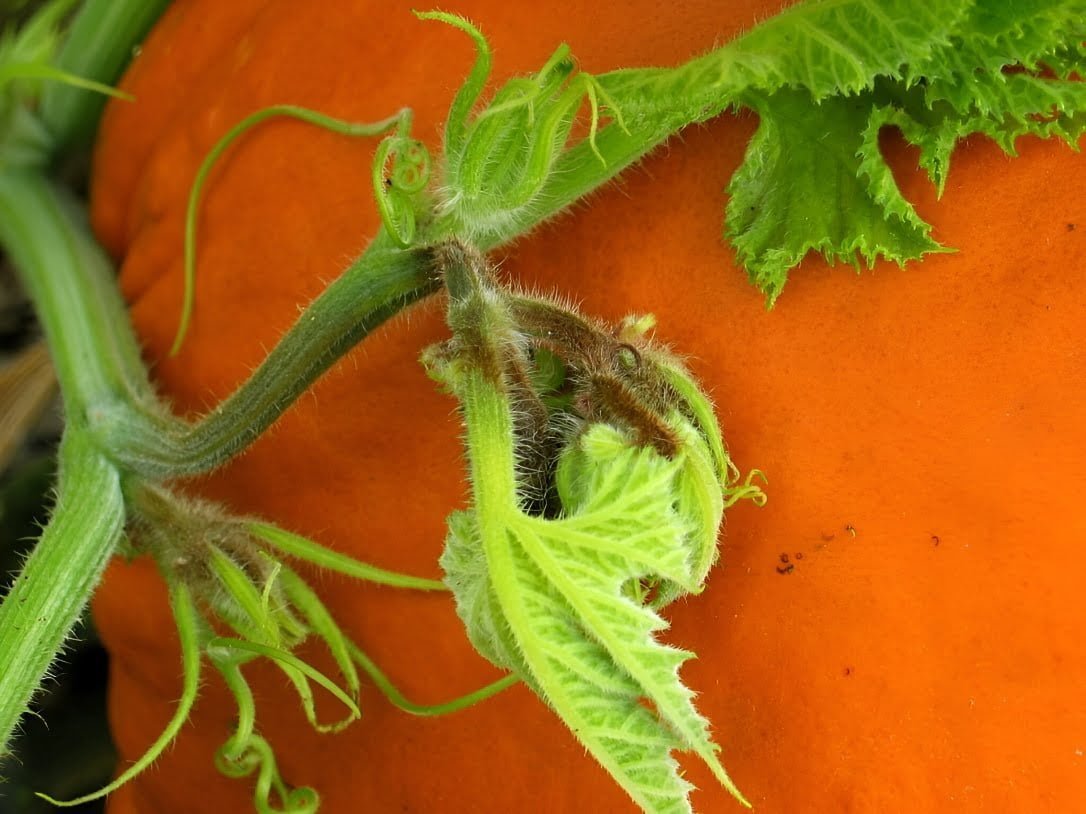
Causes of late blight in zucchini:
Soil moisture conditions are important for disease initiation.
The pathogen can develop within the roots of some weeds.
The pathogen can be transmitted between fields, in the soil, using agricultural equipment, or in running water.
Not alternating when using targeted fungicides can lead to the development of resistance on the farm faster.
The pathogen is spread in rain droplets during storms.
Excessive irrigation.
Neglecting planting distances
The fungus infestation encourages other insect pests such as Gryllotalpa, borers, worms, and squash leaf miners.
Suitable conditions for the spread of late blight in zucchini:
Ideal conditions for infection are moist soil above 65°F and air temperatures in the 75 to 85°F range.
The presence of weeds and plant remains.
Development cycle of late blight in zucchini:
The causative agent lives in the soil between crops for more than two years. The pathogen can live longer if thick-walled oospores are produced. Oospores are formed when fungi from two individuals of opposite mating type (similar to male and female) grow together.
Because oospores are the product of sexual reproduction (genetic recombination), they are the main source of new races or biotypes, including fungicide-resistant biotypes.
Spores are formed when the soil is at its field capacity (within 24 hours under controlled conditions) and spores are released when the soil is saturated. Further disease development in the crop can occur quickly due to the abundant production of sporozoites on the infected fruit and spreading over a wider area.
Late blight spread losses in zucchini
Poor productivity and yield of the crop, damage and weakening of the immunity and health of the plant
The economic threshold for damage from this disease has been estimated at approximately 75% of production when infection and damage become severe, and may reach 90%.
Crown rot causes the entire plant to completely collapse and die in a short period of time.
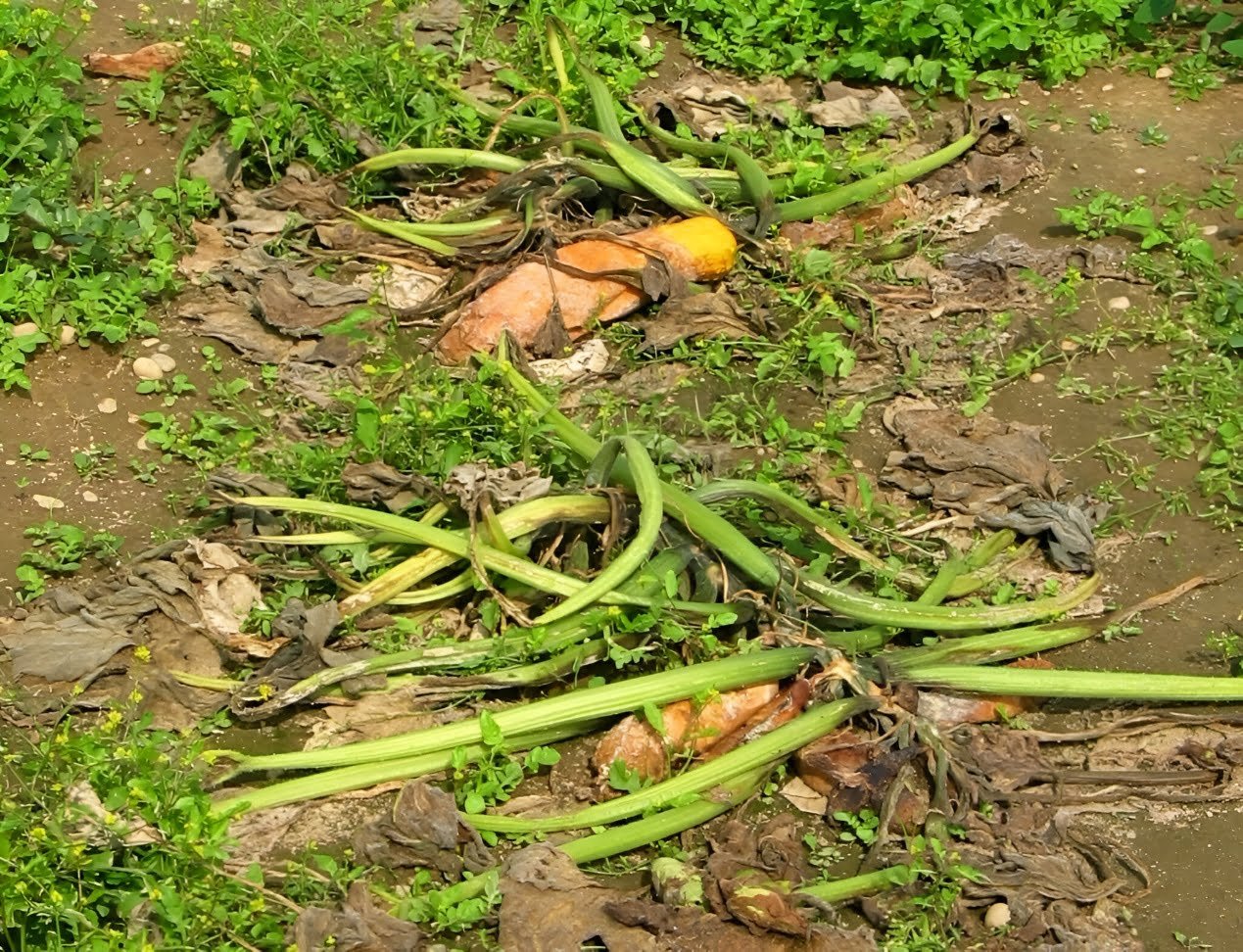
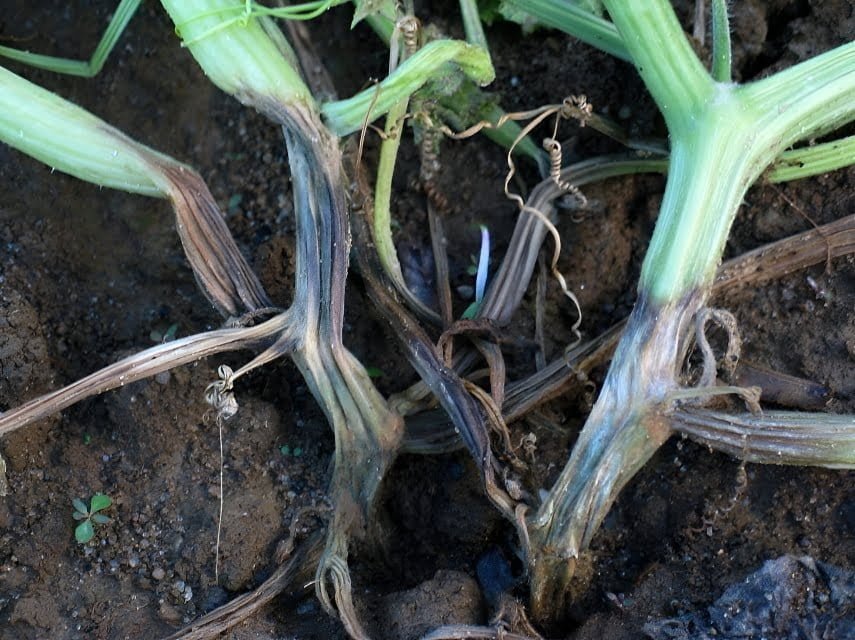
Control strategy
Preventive measures to prevent the occurrence of the disease
Use low tillage in the deep zone
Make sure the water will be able to drain out of the field. If water does not normally drain from the field, make a trench between the beds or rows at their edges, and make a ditch or waterway across the end of the field for water leaving the field in the ditches.
Consider prevailing wind direction when deciding where to plant many sensitive crops
Avoid over-watering
Completely get rid of all weeds surrounding the field by hoeing to a depth of 12 cm and burning the affected parts of the plant, especially the leaves and fruits, and disposing of them away from the zucchini field.
It has also been found that when early maturing varieties of zucchini are planted at a suitable and early date, they survive late blight.
Chemical and organic control recommendations
Organic control
Following an agricultural cycle of no less than two years for each cultivated field and planting at appropriate agricultural distances. What is meant by agricultural rotation is not growing the same plants every season and following a cycle with other crops (cucurbits - legumes).
Plant a vital mustard cover crop before a crop susceptible to Phytophthora blight, preferably during the spring rather than the previous fall
Beneficial soil microbes may play a role in pathogen suppression years after a plant blight has occurred
Chemical control
Potassium fertilization (potassium) by adding an amount of about 30-40 kg per hectare to harden plant tissues and increase immunity so that they resist fungi.
The use of specialized systemic pesticides, the most important of which are carbamate derivatives such as the pesticide Carbaryl, as well as derivatives of terazol, strobilin, microscopic sulfur, and copper.
In conclusion, we would like to note that we, at the world of plants website, offer you all the necessary services in the world of plants, we provide all farmers and those interested in plants with three main services::-
- Artificial intelligence consulting service to help you identify diseases that affect plants and how to deal with them.
- Blog about plants, plant diseases and care of various crops ... You are currently browsing one of her articles right now.
- An application that provides agricultural consultations to clients, as well as a service for imaging diseases and knowing their treatment for free – Click to download the Android version from Google Play Store، Click to download the IOS version from the Apple App Store.
References:
- Grünwald, N. J., & Flier, W. G. (2005). The biology of Phytophthora infestans at its center of origin. Annu. Rev. Phytopathol., 43, 171-190.
- Fry, W. E., Birch, P. R. J., Judelson, H. S., Grünwald, N. J., Danies, G., Everts, K. L., … & Smart, C. D. (2015). Five reasons to consider Phytophthora infestans a reemerging pathogen. Phytopathology, 105(7), 966-981.
- Fry, W. (2008). Phytophthora infestans: the plant (and R gene) destroyer. Molecular plant pathology, 9(3), 385-402.
- the biology of phytophthora infestans at its center of origin* – annualreviews
- Five Reasons to Consider Phytophthora infestans a Reemerging Pathogen – apsjournals
- Phytophthora infestans: the plant (and R gene) destroyer – WILEY ONLINE LIBRARY
- Phytophthora Blight of Cucurbits – Cornell University




